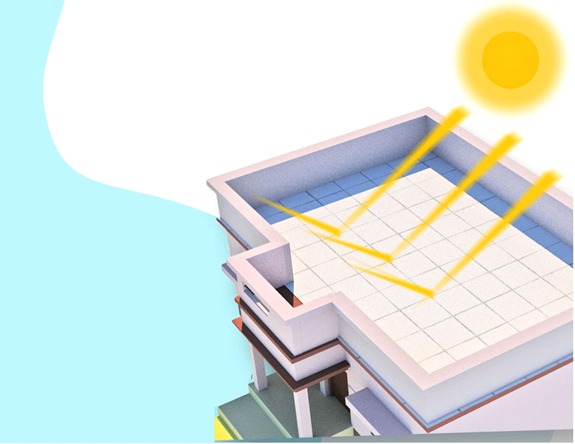The Impact of Cool Roof Tiles on Temperature Reduction
Introduction:
Cool roof tiles, also known as heatproof or cooling tiles, have emerged as a significant solution in mitigating the urban heat island effect and reducing energy consumption. These tiles are designed to reflect sunlight and absorb less heat compared to traditional roofing materials, thereby keeping buildings cooler and contributing to temperature reduction in urban areas. This article delves into the impact of cool roof tiles on temperature reduction, exploring their benefits and the factors influencing their adoption, including cooling tiles price.
Understanding Cool Roof Tiles:
Cool roof tiles are engineered to have high solar reflectance and thermal emittance properties. Solar reflectance refers to the ability of a material to reflect sunlight, while thermal emittance refers to its ability to release absorbed heat. These tiles typically have reflective coatings or pigments that reflect a significant portion of the solar radiation, preventing heat absorption into the building's structure. As a result, buildings with cool roof tiles experience lower indoor temperatures, reducing the need for air conditioning and lowering energy costs.
Benefits of Cool Roof Tiles:
Temperature Reduction: The primary benefit of cool roof tiles is their ability to reduce indoor temperatures by reflecting sunlight and minimizing heat proof cooling tiles absorption. This not only improves comfort for building occupants but also reduces the demand for air conditioning, leading to energy savings and lower electricity bills.
Energy Efficiency: By reducing the need for air conditioning, cool roof tiles contribute to improved energy efficiency in buildings. This is particularly important in hot climates where cooling accounts for a significant portion of energy consumption. With cooler indoor temperatures, buildings require less energy for cooling, resulting in reduced carbon emissions and environmental impact.
Urban Heat Island Mitigation: Cool roof tiles play a crucial role in mitigating the urban heat island effect, which occurs when urban areas experience significantly higher temperatures than surrounding rural areas due to the absorption and retention of heat by buildings and pavement. By reflecting sunlight and reducing heat absorption, cool roof tiles help lower surface temperatures in urban areas, creating a more comfortable and sustainable environment.
Factors Influencing Adoption:
Cost: While the benefits of cool roof tiles are undeniable, the initial cost of installation can be a barrier to adoption for some homeowners and building owners. However, it's essential to consider the long-term savings in energy costs and the potential return on investment offered by these tiles. Additionally, advancements in technology and increased demand are driving down the cost of cool roof tiles, making them more accessible to a wider range of consumers.
Climate Considerations: The effectiveness of cool roof tiles may vary depending on climate conditions. While they are highly beneficial in hot and sunny climates, their impact may be less significant in cooler regions with fewer sunny days. Therefore, the decision to install cool roof tiles should take into account the local climate and environmental factors.
Building Regulations and Incentives: In some regions, building codes and regulations may encourage or require the use of cool roof tiles to improve energy efficiency and reduce environmental impact. Additionally, government incentives such as tax credits or rebates may be available to offset the cost of installing cool roof tiles, further incentivizing their adoption.
Cooling Tiles Price: The price of cool roof tiles varies depending on factors such as the material, manufacturer, and installation costs. Generally, cool roof tiles may be more expensive than traditional roofing materials upfront, but the long-term energy savings and environmental benefits often justify the investment. As demand for cool roof tiles continues to grow and technology advances, prices are expected to become more competitive, making them a cost-effective solution for temperature reduction in buildings.
Conclusion:
Cool roof tiles offer a sustainable solution for reducing indoor temperatures, improving energy efficiency, and mitigating the urban heat island effect. Despite initial cost considerations, the long-term benefits of cool roof tiles make them a worthwhile investment for homeowners, building owners, and communities striving for sustainable development. As technology advances and awareness of environmental issues grows, the adoption of cool roof tiles is expected to increase, contributing to a cooler, more comfortable, and energy-efficient built environment.




